Here is the Volume 1 of Curling from When you watch something, visit us first! Ms. Mika MATSUZAWA, who represented Japan in Curling at the 19th Olympic Winter Games in Salt Lake City, USA, 2002, told us about the Basics of Tactics of Curling this time. This is the combined version of Part 1-1 & 1-2 on our YouTube channel.
Curling, also known as “Chess on the Ice,” has recently become often seen in the more than 30 years since it became an official event for the Olympic Games.
This time, Ms. Mika MATSUZAWA, who represented Japan in Curling at the 19th Olympic Winter Games held in Salt Lake City, USA, in 2002, told us about the basics of tactics of Curling.
I think you will understand how Curlers (Curling players) think about competing.
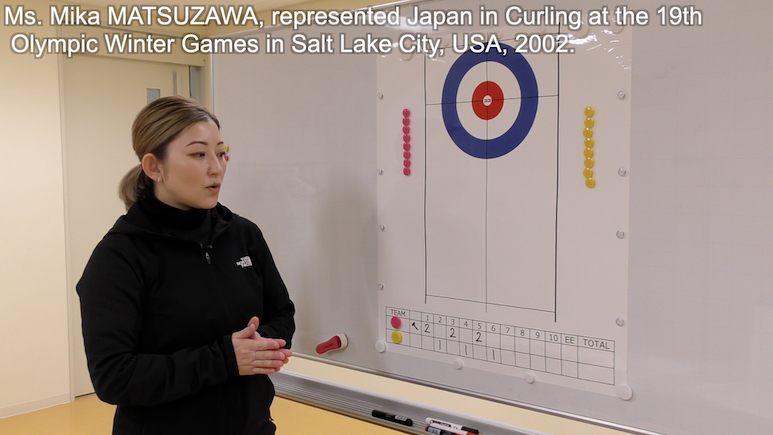
Part 1-1: Basic Concept
First, let me talk about the basic concept of Curling. This is the “Hammer mark,” which is a mark that indicates that the team will deliver the last stone in the 1st end, and most of teams aims to score multiple points when they are to deliver the last stone.
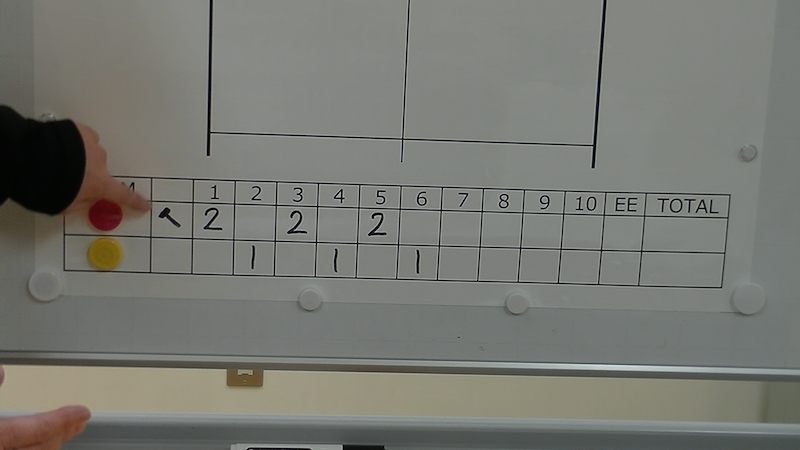
For example, the Red team thinks to score 2 points in the 1st end and then let the opponent (Yellow) score only 1 point in the 2nd end, since in Curling, scoring points will switch to deliver the 1st stone in the next end which is disadvantageous. The basic idea is that if Red team repeatedly scores 2 points themselves and allows the opponent to score only 1 points, they will eventually win because they will inevitably score more points than the opponent.

However, considering the game flow, as there are 10 ends in total, teams would like to win the game with the last stone in the final 10th end, therefore, they want to have the last stone and to score firmly in the even-numbered end before that, in the 8th end for example, and let the opponent score 1 point, the minimum, in the 9th end, and in the 10th end, they are to finish the game with the favorable last stone is ideal.

And, if a team repeats the process of scoring 2 points with the last stone from the 1st end, they will actually always be with the last stone in the odd-numbered end, so what they have to think about is, giving 1 point to the opponent in this end is the theory, of course, but if it is possible depending on the situation, they would “steal” (To score by the team that delivers the first stone in that end) and score 1 point, for example.
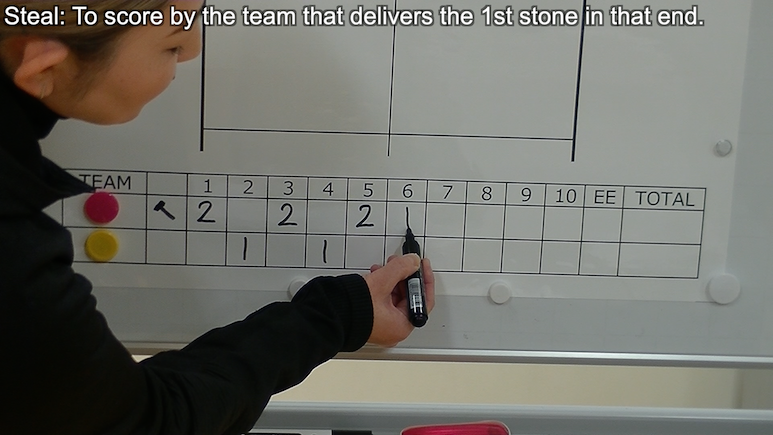
Then, the opponent will score 1 point in the 7th end, and 2 points will be scored by themselves in the 8th end. If the game is played in this way, it will be possible to win the game with having the last stone in the 10th end.
However, this is of course an “ideal” situation, and it is not always the case that such situation will take place, therefore, if players take the approach of having about a 1 point or 2 points difference around the 8th end and coming to the 10th end, it will be possible to control whether they can have the last stone in the 10th end while reducing the point difference between both teams in a seesaw game.
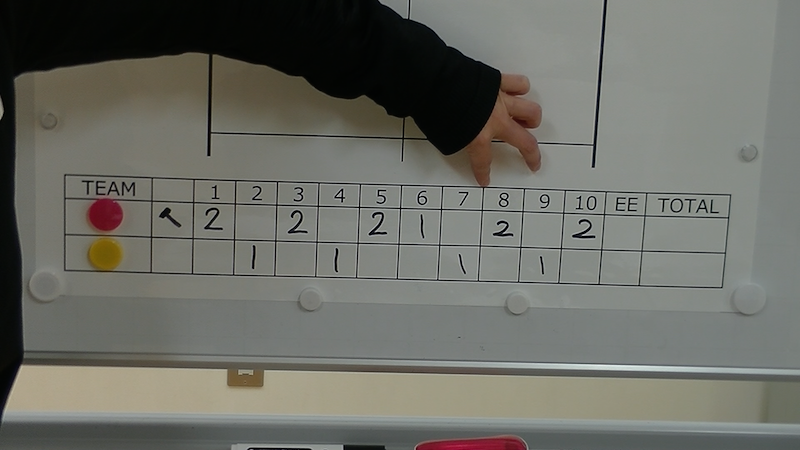
Q: Why is it more advantageous to deliver the last stone in an end?
Being able to deliver the last stone means that they can change the shape at the end, making it easier to take advantage of the situation.
Even if there are many stones in the House like this, it is easy to score points with the last stone of the end as long as the center is clear. Therefore, teams with the last stone aim to make the center clean.
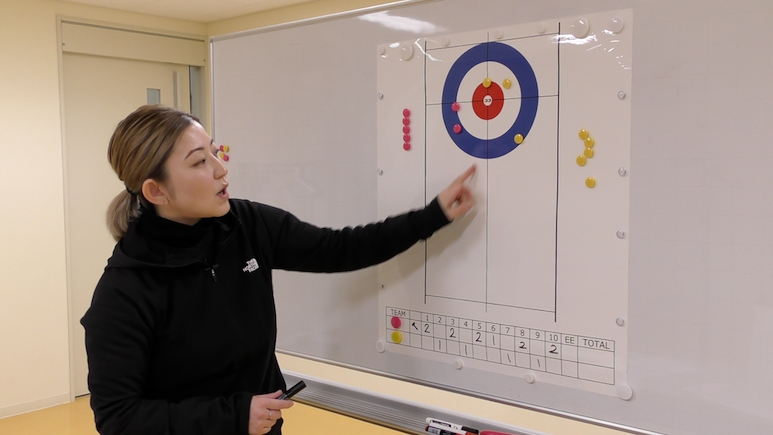
However, as the opponent, the basic idea is to make it difficult to deliver the last stone, with collecting stones in the center. Therefore, if there is no stone in the center, it will be easy to score points with the last stone.
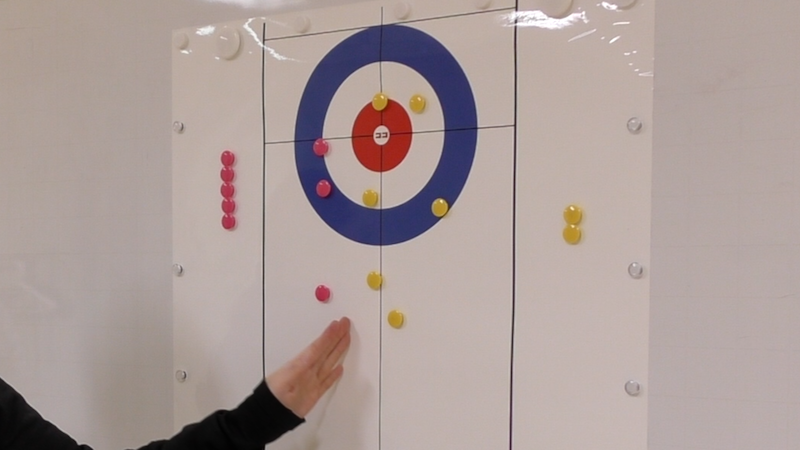
However, in such a case like this, even if they score only 1 point, they will be disadvantage in the next end, as they are without the last stone, so the basic idea is to create a situation where they score multiple points when they have the last stone as much as possible and let their opponent 1 point, which is the fewest point, in the next end.

The game plan is how to control the flow from the 1st end to the 10th end. Furthermore, as a plan for each end, what kind of development will be made by each team’s 8 stones in each end. For example, in each end, players have to think about how they will score 2 points and how they will let the opponent score only 1 point,
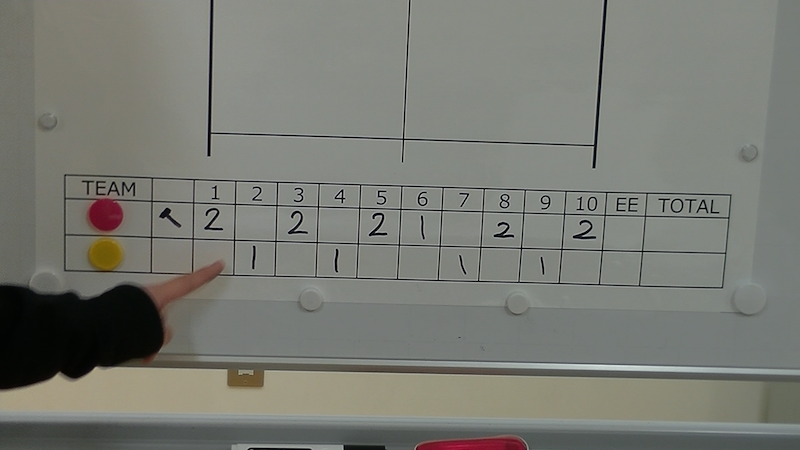
therefore, to control both the “Game plan” and the “End plan” is the key for the win in Curling.
Part 1-2: Free Guard Zone
The “Free Guard Zone” rule was formerly that stones which are in the Free Guard Zone (FGZ) which I am indicating and not in the House,
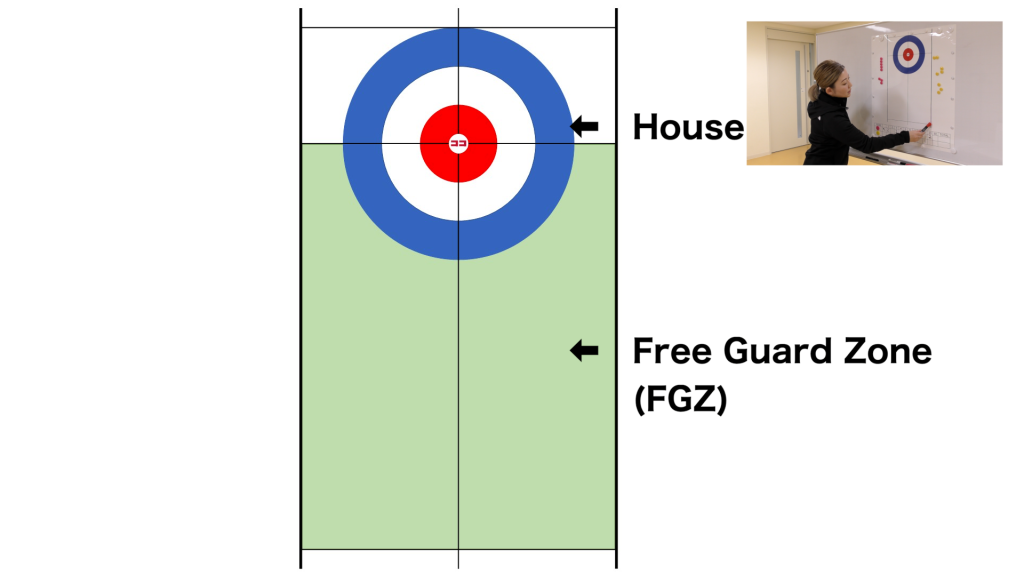
during 4 delivery by Leads (Player to deliver the 1st & 2nd stone of each team) of both teams, must not be “taken out” from the playing area, but this rule did not exist a while ago.
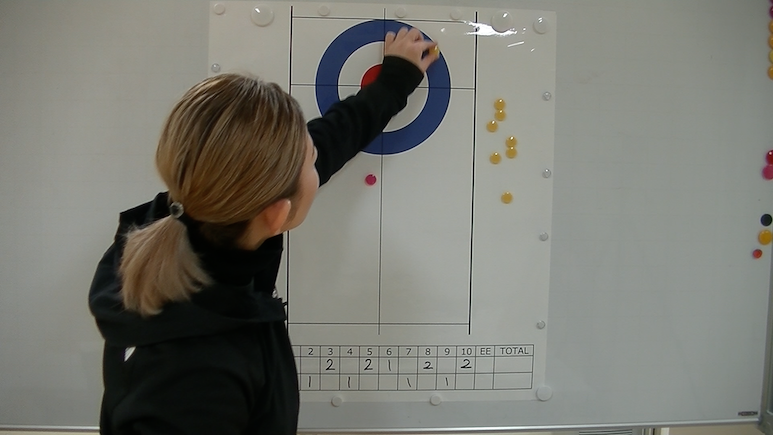
Even if Yellow team places 1 guard (Stones placed in the FGZ to hide stones behind them) stone, it is an obstacle for Red which has the last stone, so they will surely take it out at the beginning. Yellow puts guard stone again. But Red doesn’t like it, so they take it out again.
For example, if the end proceeds in this way, Red can score 1 point by delivering 1 stone into the House at the end with no stone.
For example, the opponent made a mistake. Yes, this is 2 points.

It was quite common to score 2 points when there were few stones and the opponent made a mistake, for example, their stone did not go into the House. It was difficult to score points without guard stones, but with the introduction of the FGZ rule, guard stones became more effective and players were able to put more pressure on their opponents and to make shots that would induce the opponent’s mistakes, resulting in greater fluctuation in scores.
And I mentioned earlier that during the Lead’s 4 stones were subject to the FGZ rule, but now the rule has been changed to the Five Rock rule, which states that until the 1st delivery of the Second (Player to deliver the 3rd & 4th stone of each team) of the team without the last stone, stones in FGZ should not be taken out.
This rule inevitably causes stones to accumulate, as stones in FGZ cannot be taken out. And the situation is becoming more and more difficult to attack and defend in the House, making it possible to score more points.
To put it extremely simply, if a team does not score any point, they can have the last stone in the next end as well, so it was possible to continue the situation of zero to zero during the game and win the game by scoring 1 point in the 10th end, which would be a 1-0 win without the FGZ rule. Of course, the basic premise is that there are no mistakes.
Therefore, I think it is thanks to the FGZ rule that players are now able to score points by themselves, rather than waiting for the opponents to make mistakes.
Share this content:
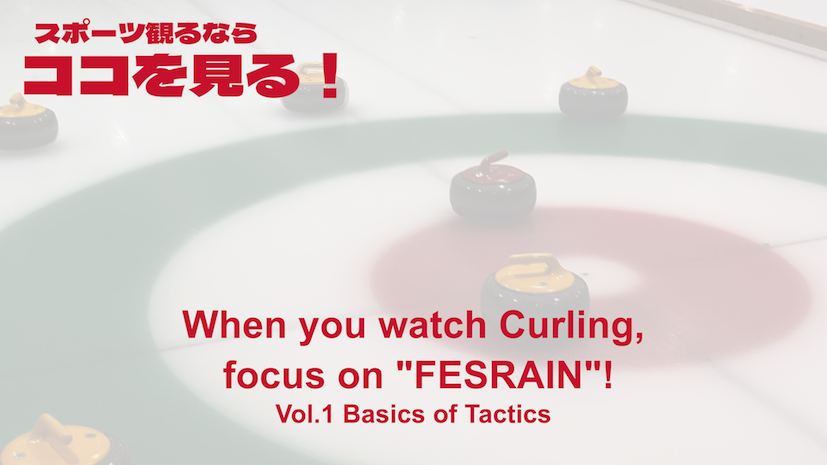
コメントを残す